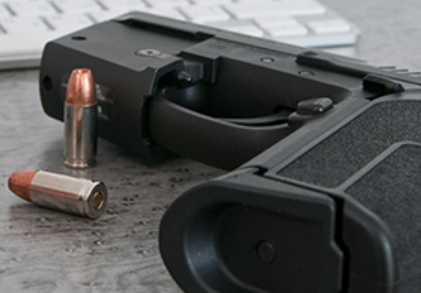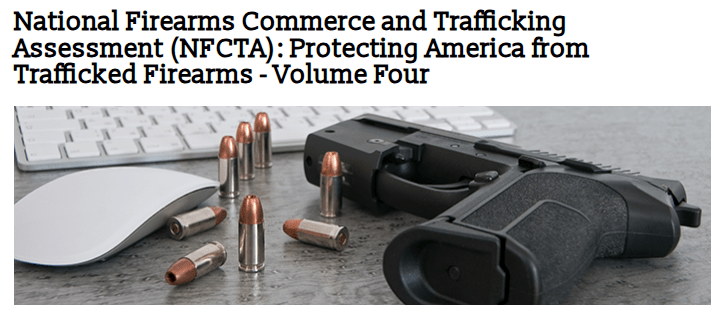
The Justice Department has released the final volume of the National Firearms Commerce and Trafficking Assessment (NFCTA), concluding a historic multi-year study by the Bureau of Alcohol, Tobacco, Firearms, and Explosives (ATF) on how firearms flow into illegal markets. The report, titled Protecting America from Trafficked Firearms, marks the most comprehensive analysis of gun trafficking in over two decades.
Launched in 2021 under directives from President Biden and Attorney General Merrick Garland, the NFCTA examined patterns and practices of criminal gun trafficking. The fourth and final volume highlights the challenges posed by untraceable firearms, machinegun conversion devices, and cross-border gun trafficking while offering critical recommendations to combat these issues.
Key Highlights from Volume IV
The final volume presents updated data and trends that illustrate how firearms are diverted into illegal markets and the critical role of ATF’s intelligence tools in addressing these issues. Key findings include:
- Surge in Ghost Guns: The recovery of privately made firearms (PMFs), often called “ghost guns,” surged by 1,600% from 2017 to 2023. Over 27,000 PMFs were linked to crimes, including nearly 1,700 homicides and more than 4,000 violent crimes.
- Rise in Machinegun Conversion Devices: Recoveries of machinegun conversion devices (MCDs), which can transform semi-automatic firearms into fully automatic ones, increased by 784% over the past four years. In response, the Justice Department established an Anti-MCD Task Force to combat the spread of these illegal devices.
- Effectiveness of ATF Crime Gun Tools: Advanced tools like the National Integrated Ballistic Information Network (NIBIN) and eTrace have been crucial in solving gun crimes. From 2017 to 2023, crime gun trace requests rose by 52%, and NIBIN provided over 1 million investigative leads, helping law enforcement connect shootings and identify offenders.
- Firearm Trafficking to Mexico: The report highlights the significant role of U.S. firearms in arming Mexican cartels. Between 2017 and 2023, 63% more firearms recovered in Mexico were traced back to the U.S., with Texas, Arizona, and California being the leading source states.
- Theft and Multiple Sales: Nearly 1.1 million firearms were reported stolen between 2019 and 2023, with stolen guns more likely to be used in crimes. Crime guns traced to multiple-sale transactions doubled over five years, highlighting the role of bulk purchases in illegal trafficking.
- Decline in Time to Crime (TTC): The median time between a firearm’s legal purchase and its recovery at a crime scene dropped by 30%, signaling an uptick in firearms being quickly diverted to illegal markets.
The report also underscores the effectiveness of ATF’s crime gun intelligence tools, such as the National Integrated Ballistic Information Network (NIBIN) and eTrace, in generating leads to prevent violent crime. Between 2017 and 2023, crime gun trace requests increased by 52%, and ballistics evidence entered into NIBIN provided over a million investigative leads.
Attorney General Garland emphasized the significance of the findings: “This report confirms the pivotal role of ATF’s intelligence tools in reducing violent crime and underscores the need to expand these resources.” Deputy Attorney General Lisa Monaco added that the report highlights progress made through enhanced gun tracing and intelligence-sharing among law enforcement agencies.
The NFCTA also provides a stark look at firearms trafficking along the southern U.S. border. Texas, Arizona, and California were identified as leading sources of guns recovered in Mexico, where drug cartels use smuggling channels to acquire firearms. Between 2017 and 2023, ATF interdicted over 1,000 crime guns intended for illegal export, with an 86% increase in seizures reported in 2023 alone.
The final volume recommends several policy changes, including expanding background checks, improving accountability in law enforcement firearm resales, and increasing funding for ATF tools and programs. It concludes that well-funded, data-driven strategies are critical to disrupting the flow of firearms into the hands of violent offenders.


